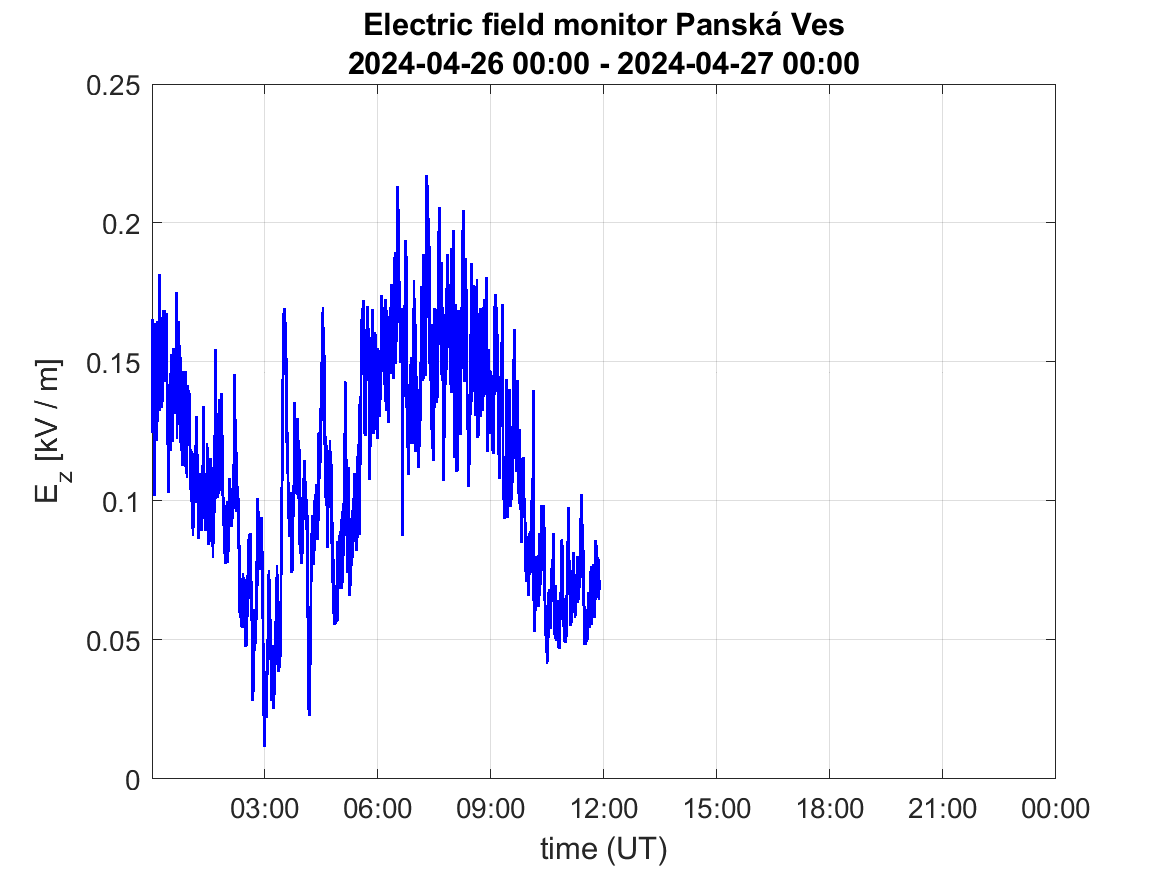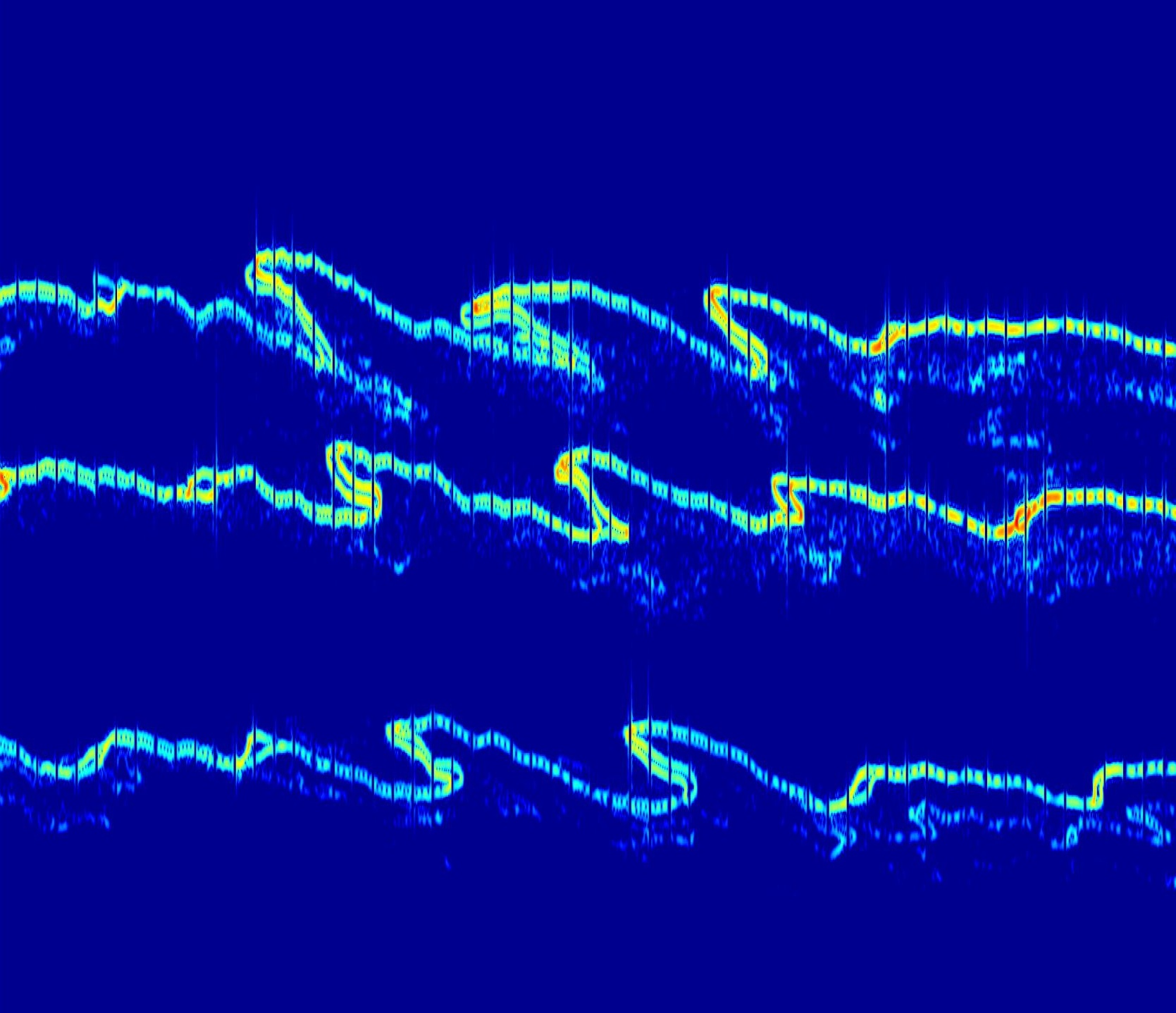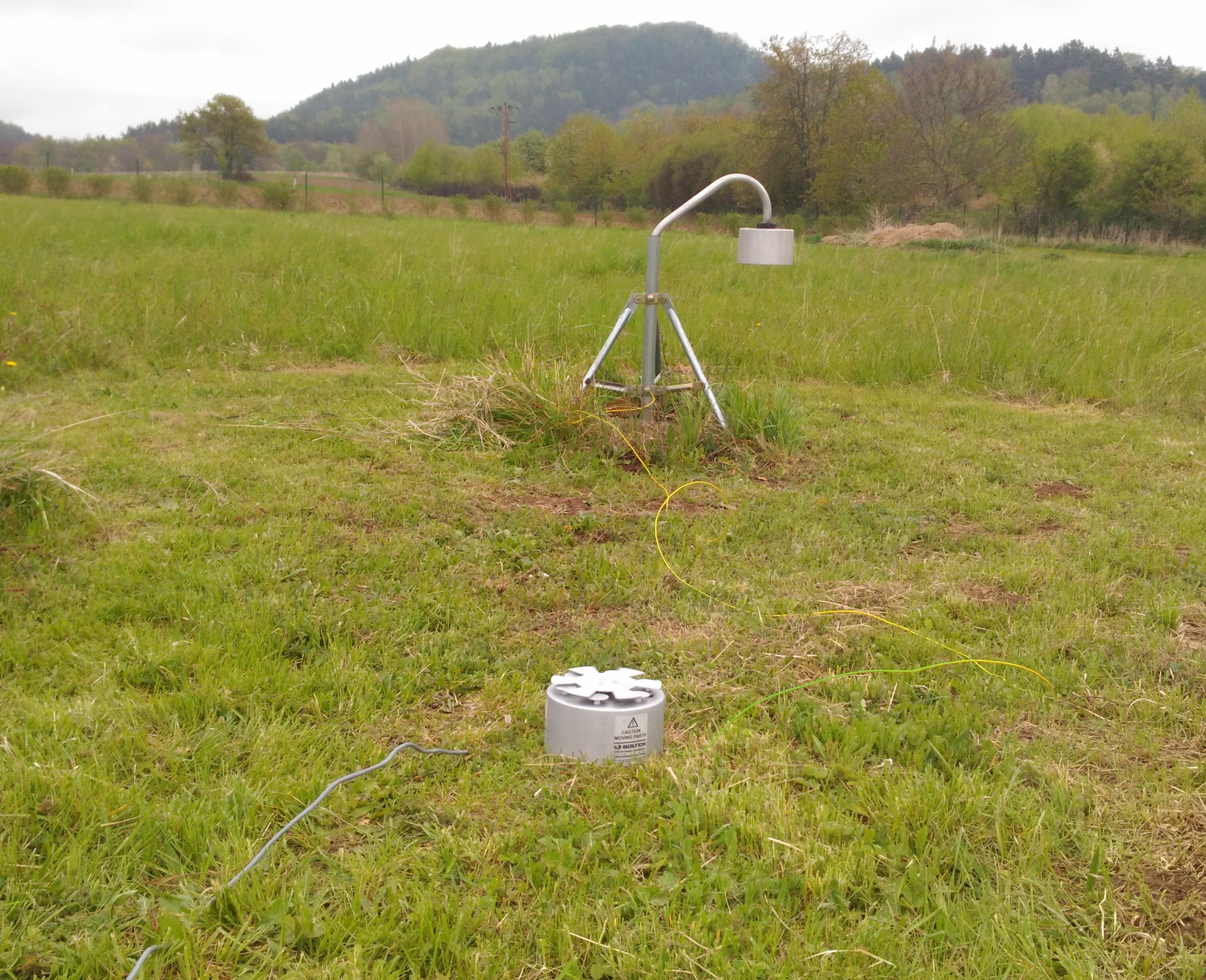Atmospheric electricity measurement

Doppler sounding

Ionospheric measurement
Doppler sounding of ionospheric fluctuations and disturbances
Multi-point continuous Doppler sounding makes it possible to investigate propagation of atmospheric waves and other disturbances in the upper atmosphere and ionosphere such as spread F, ionospheric response to solar flares, geomagnetic activity etc. Its advantage is a high time resolution (around 10 s), if compared with the ionospheric sounders that measure the profile of electron densities in the ionosphere. The continuous Doppler sounding is based on the measurement of Doppler shift, which experience the radio waves that reflect from the ionosphere. The Doppler shift results from the motion of reflecting level or from the changes of electron densities. Our system is operated, in collaboration with international partners, in the Czech Republic, northern Argentina, Taiwan, and South Africa.
Ionospheric sounder (digisonde) in Průhonice
Ionosonde is a special radar that measures electron densities (height profile of electron densities) by sounding radio impulses of various frequencies. Ionospheric sounder at Průhonice station has operated since 1957. A new digital portable sounder (DPS) operating since 2004 uses four cross-loop receiving antennas and is also able to measure angle of arrival of sounding waves and plasma drifts in the ionosphere besides the profile of electron densities. The data are sent to several world databases and help to determine so-called total electron content; its knowledge results in better accuracy of global navigation systems as GPS.
Measurements of atmospheric electricity (electrostatic field)
The electrostatic field is a consequence of a potential difference (around 250 kV) between the electrically conducting ionosphere and the Earth. The potential difference results from charge separation in clouds, usually in the thunderclouds. Interplanetary magnetic field in the solar wind might also contribute to the potential difference at high latitudes. A typical value of electric field intensity in a free flat terrain at the ground during fair weather is about 100 V/m. Local weather – charged thunderclouds cause distinct changes of the local electric field. Consequently, the local electric field can reach values of several kV/m, and even about 100 kV/m at distinct sharp high-mountain peaks.



